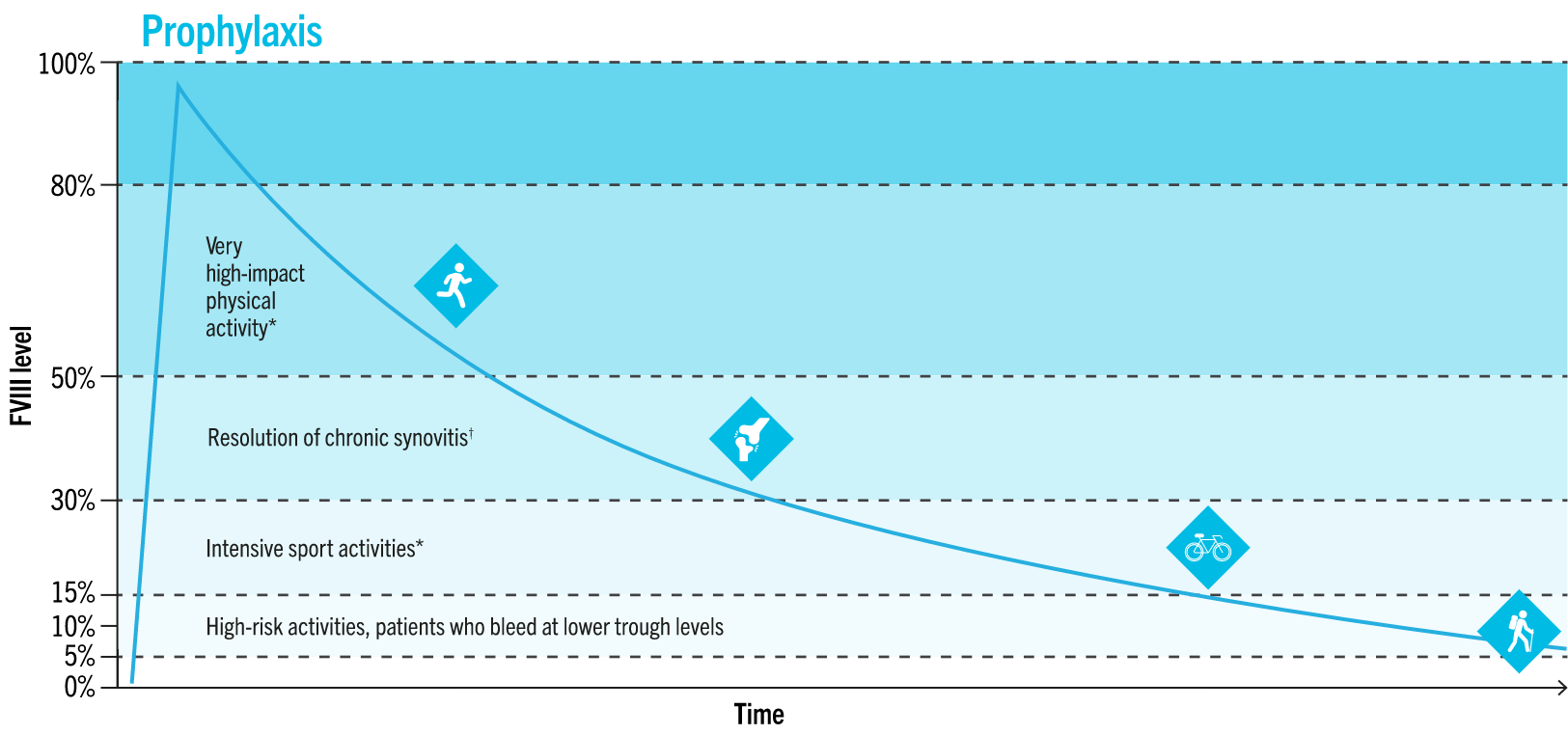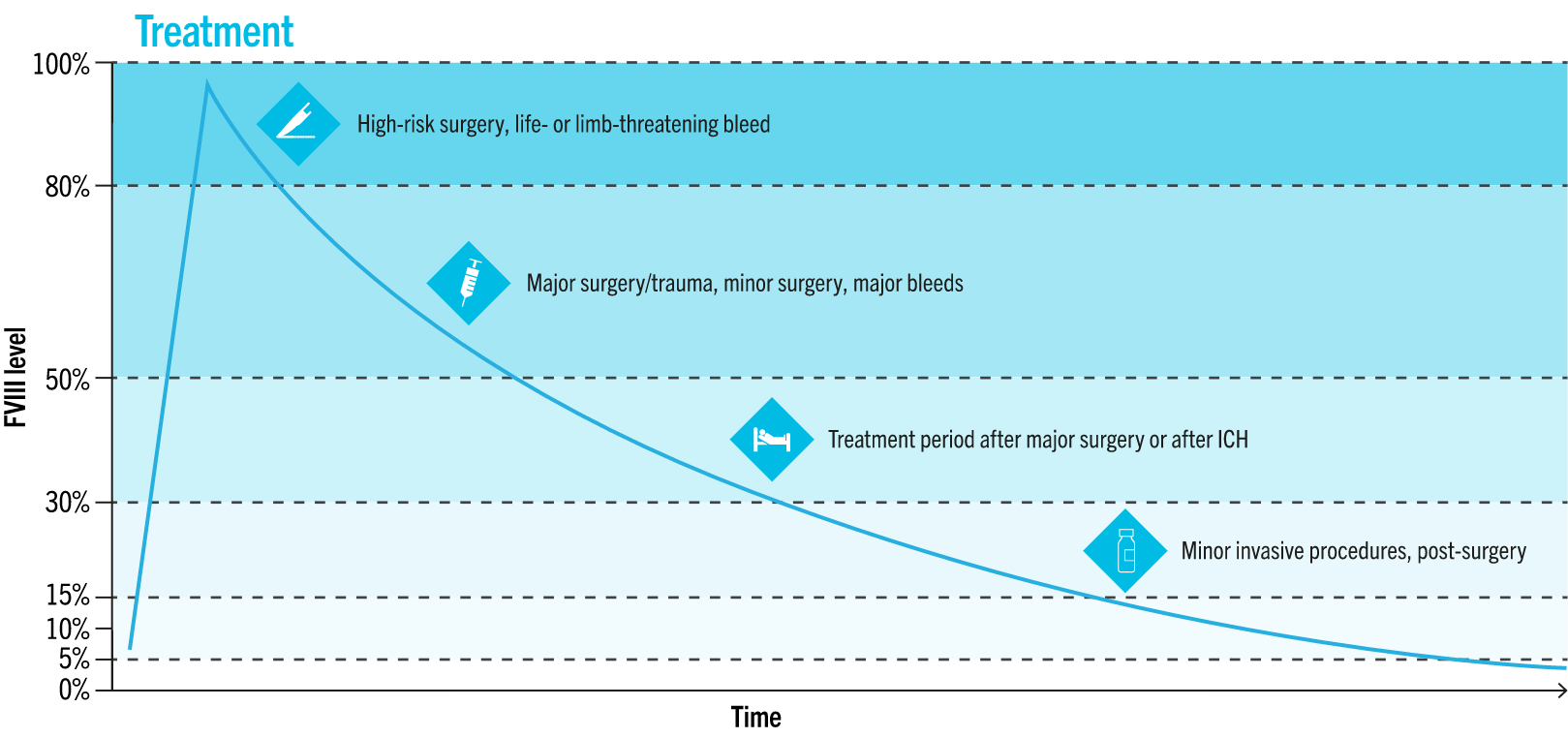Personalised protection
Prophylaxis can help patients achieve increased protection against bleeds, resulting in improved joint health and a better quality of life.1
Because different activities require different FVIII levels to stay protected, it’s important to tailor treatment around each of your patient’s lifestyles and clinical needs.1,2


Adapted from Iorio A, et al. 2017.
*This consensus was established by the Delphi technique. In these areas, a consensus was not reached and the areas were identified and proposed for future research.
†Based on German treatment guidelines.
Prophylaxis should be personalised to your patients’ individual needs, taking into consideration their:1
• physical activity levels
• PK profile
• comorbidities
• age
• lifestyle and personal preferences
The World Federation of Haemophilia recommends that prophylaxis should:1
• be individualised, determined jointly with the patient and based on their lifestyle and personal preferences
• aim to enable people with haemophilia to lead active lives and achieve a quality of life comparable to those without haemophilia
Access the full World Federation of Haemophilia 2020 Guidelines here.


